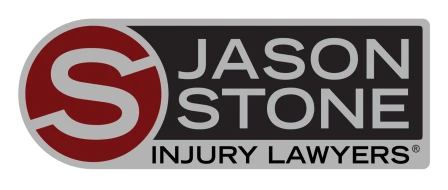Though the federal government enacted the first edition of a law regulating water pollution in 1948 and its expanded version — The Clean Water Act — in 1972, many industries continued egregious actions that led to toxic water. Many stationed at Camp Lejeune, a Marine Corps installation located in North Carolina, from the early 1950s to the late 1980s know all too well the harm that can come from such behaviors.
Though the U.S. Department of Veterans Affairs provides disability benefits, including healthcare and disability payments, it isn’t enough to compensate many for the total harm they experience. For decades, North Carolina denied legal claims due to a statute of limitations rule barring legal action more than 10 years after the last harmful exposure. The Camp Lejeune Justice Act of 2022 seeks to remedy the injustice for victims by allowing them to file a water contamination injury lawsuit. If you were exposed to contaminated water at Camp Lejeune and have a severe illness related to your exposure, you might want to contact a personal injury lawyer for a case evaluation.
The History of Camp Lejeune’s Water Contamination Problem
Camp Lejeune has been around since 1942. The installation sits on 153,439 acres abutting the Atlantic Ocean in North Carolina. It is the largest Marine Corps facility on the East Coast, housing millions of military personnel, civilians and their families over its 80-year history. Eight water treatment plants using multiple well sources provide water to those on the base.
In 1982, Camp Lejeune hired a chemical testing facility to analyze water quality from the base’s water treatment plants. The results showed that two plants supplied water containing toxic volatile organic compounds at levels far exceeding those the Environmental Protection Agency deems safe for human consumption.
Tarawa Terrace
Tarawa Terrace water contained two VOCs at high concentrations: perchloroethylene and tetrachloroethylene. Dry cleaning agents have high levels of VOCs, and it turned out that ABC Dry Cleaners was dumping its wastewater into storm drains. This water made its way to wells supplying the treatment plant. Though the Marine Corps shut down supplies from the most contaminated wells in 1985, high exposure likely continued from late 1957 to early 1987.
Hadnot Point
The Hadnot Point plant also contained high concentrations of PCE and TCE, along with benzene and vinyl chloride. Contaminant sources for these compounds included leaking underground storage tanks, industrial spills and waste disposal sites. Water modeling from the Center for Disease Control’s Agency for Toxic Substances and Disease Registry indicate that contaminant levels likely exceeded safe concentrations from August 1953 until January 1985.
The Camp Lejeune Justice Act of 2022
On August 10, 2022, President Biden signed off on the Camp Lejeune Justice Act of 2022. With the law’s passage comes an opportunity for those impacted to recover fair compensation for their injuries. The law permits personal injury claims against the U.S. government for health issues resulting from water contaminant exposure at Camp Lejeune. The government can’t evade liability by citing immunity, and the North Carolina statute of limitations does not apply to these cases.
Eligibility: Residence
The first step to eligibility is residency at Camp Lejeune during the law’s indicated timeframe. If you spent at least 30 days on the base between August 1, 1953, and December 31, 1987, you meet the law’s criteria for presence at Camp Lejeune when water contamination levels were unsafe. You must have evidence showing that you were there.
Active and retired service members, civilian employees and family members who were on base can all file a personal injury claim under the CLJA if they meet all criteria. The law also includes fetuses when the mothers were at the installation within the established time. Additionally, if you lost a loved one to a disease caused by one of the VOCs in Camp Lejeune’s water, you may be able to file a wrongful death claim.
Eligibility: Health Impacts
Exposure does not always result in adverse health impacts. Furthermore, individuals who develop health issues vary in severity and outcomes. Exposure factors play a role in whether a person contracts a disease. These factors include the length of exposure and toxicity level.
However, individual characteristics also contribute to health outcomes, including age at the time of exposure, genetics and lifestyle. Though exposure creates risk, some people never contract a disease. That said, research connects the VOCs present in Camp Lejeune drinking water with several serious health conditions, many of which are life-threatening. Sufficient evidence exists linking TCE, PCE, benzene and vinyl chloride to the following diseases:
- Kidney, liver and bladder cancers
- Non-Hodgkin lymphoma and leukemias
- Multiple myeloma
- Scleroderma
- End-stage renal disease
- Parkinson’s disease
- Cardiac defects
Numerous other conditions also have at least some supporting evidence, including several congenital disabilities and health conditions, fetal mortality, cancers of the female reproductive system, brain cancer, lung cancer, neurological effects, neurobehavioral deficits and immune system dysfunction.
Establishing Proof of Liability
In a personal injury lawsuit, it is always the claimant’s responsibility to prove liability. Once you pass the first hurdle of establishing your presence for at least 30 days during the designated time, you must provide proof of harm and at least a 50% likelihood that water contaminant exposure at Camp Lejeune caused the injury. Documentation should include your medical history from when you were on the base to the present and doctors’ reports and statements.
Potential Damages
A personal injury lawsuit provides an opportunity to recover damages for the totality of your losses. You may seek compensation for past and future medical care along with the following:
- Diminished earning capacity
- Physical pain and suffering
- Psychological and emotional damages
- Loss of enjoyment of life and relationships
You cannot pursue punitive damages. Additionally, once you file a claim for injuries due to exposure to Camp Lejeune’s water, you will not be able to file another claim for the same injuries.
You will also need evidence to connect these losses with your illness and exposure. If the court awards damages, it will subtract any benefits or payments you received from the V.A., Medicare, Medicaid and any benefits connected to Camp Lejeune water contamination exposure.
Statute of Limitations
Though North Carolina’s statute of limitations doesn’t apply to claims filed under the CLJA, the law imposes its own deadline. You have the later of the two following time limits to submit a lawsuit:
- Within two years from the date the CLJA was signed into law, giving you a deadline of August 2024
- Within 180 days after you receive a denial of a claim made under U.S. Code Title 28, Section 2675
The statute of limitations leaves you without much time to gather evidence, determine damages and file your claim. Once the time runs out, you will miss out on your opportunity to recover fair compensation for your losses.
The Personal Injury Lawyers Who Can Help
If you believe you meet the CLJA eligibility criteria, we urge you to seek assistance from personal injury lawyers with experience handling claims against the federal government. The Jason Stone Injury Lawyers team is here to help you obtain the compensation you deserve. We offer our Stone Cold Guarantee to ensure you won’t pay anything until we win your case. Give us a call today: There’s No Obligation, Just Information®.
Not Trusting What You’re Being Told?
Better Phone Stone
800-577-5188
 START MY NO OBLIGATION CONSULTATION
START MY NO OBLIGATION CONSULTATION







